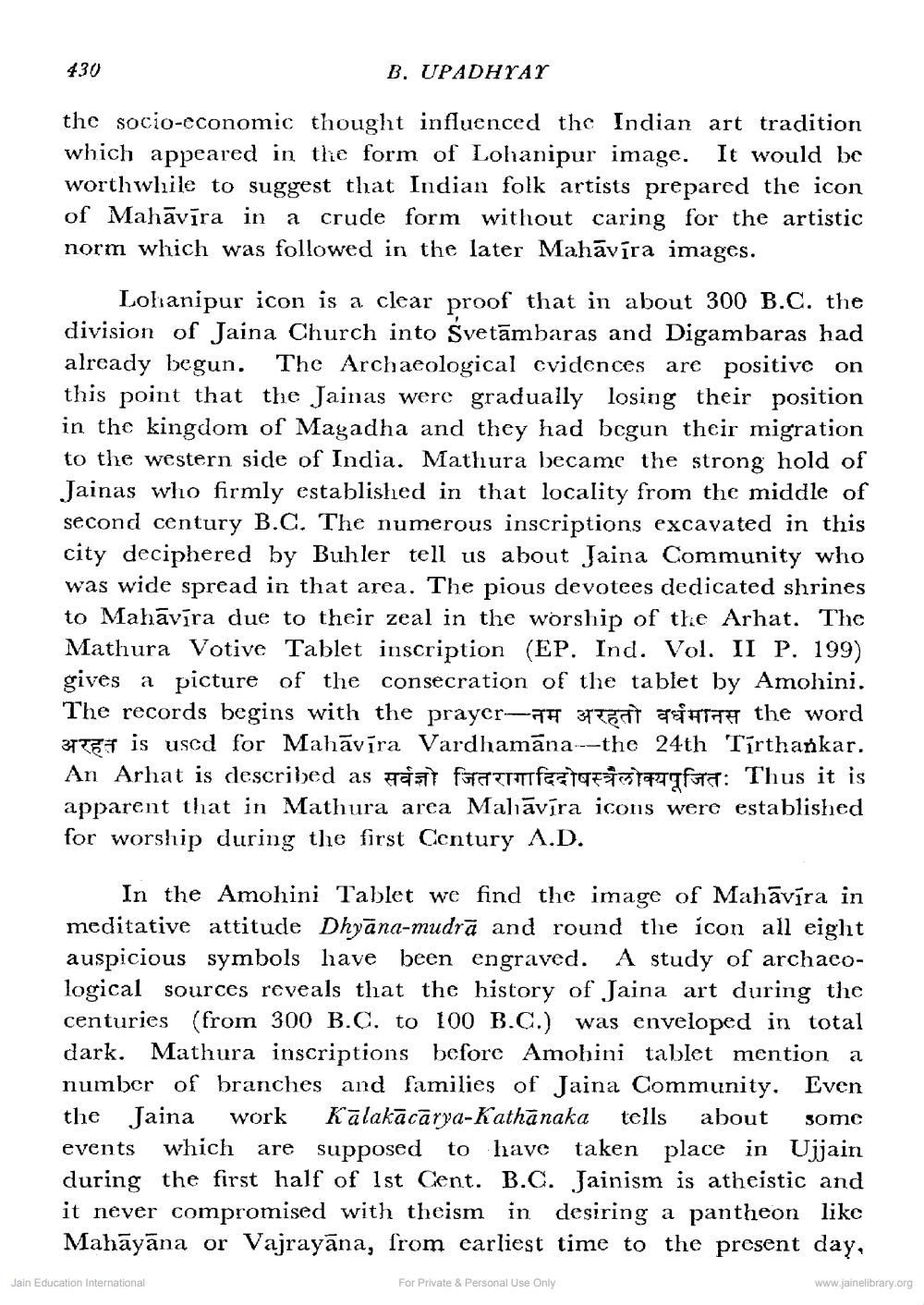________________
430
B. UPADHYAY
the socio-economic thought influenced the Indian art tradition which appeared in the form of Lohanipur image. It would be worthwhile to suggest that Indian folk artists prepared the icon of Mahāvīra in a crude form without caring for the artistic norm which was followed in the later Mahāvíra images.
Lohanipur icon is a clear proof that in about 300 B.C. the division of Jaina Church into Svetāmbaras and Digambaras had already begun. The Archaeological cvidences are positive on this point that the Jainas were gradually losing their position in the kingdom of Magadha and they had begun their migration to the western side of India. Mathura became the strong hold of Jainas who firmly established in that locality from the middle of second century B.C. The numerous inscriptions excavated in this city deciphered by Buhler tell us about Jaina Community who was wide spread in that area. The pious devotees dedicated shrines to Mahāvīra due to their zeal in the worship of the Arhat. The Mathura Votive Tablet inscription (EP. Ind. Vol. II P. 199) gives a picture of the consecration of the tablet by Amohini. The records begins with the prayer-A# ET TĦ the word 37TFT is used for Mahāvīra Vardhamāna--the 24th Tirthankar. An Arhat is described as सर्वज्ञो जितरागादिदोषस्त्रैलोक्यपूजितः Thus it is apparent that in Mathura area Malāvīra icons were established for worship during the first Century A.D.
In the Amohini Tablet we find the image of Mahāvíra in meditative attitude Dhyāna-mudrā and round the icon all eight auspicious symbols have been engraved. A study of archaeological sources reveals that the history of Jaina art during the centuries (from 300 B.C. to 100 B.C.) was enveloped in total dark. Mathura inscriptions before Amohini tablet mention a number of branches and families of Jaina Community. Even the Jaina work Kālakācārya-Kathānaka tells about some events which are supposed to have taken place in Ujjain during the first half of 1st Cent. B.C. Jainism is atheistic and it never compromised with theism in desiring a pantheon like Mahāyāna or Vajrayāna, from earliest time to the present day,
Jain Education International
For Private & Personal Use Only
www.jainelibrary.org




